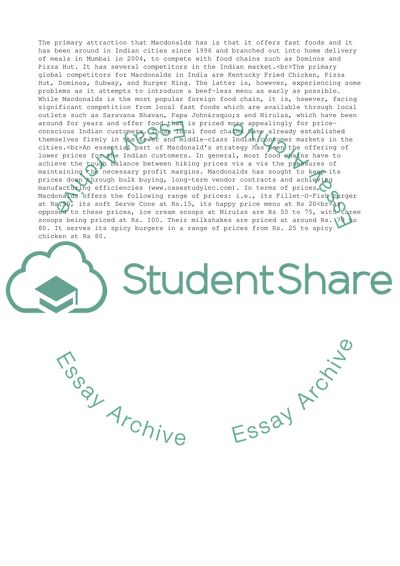Cite this document
(McDonalds Strategy in India Research Paper Example | Topics and Well Written Essays - 3000 words, n.d.)
McDonalds Strategy in India Research Paper Example | Topics and Well Written Essays - 3000 words. Retrieved from https://studentshare.org/business/1741046-analysis-of-mcdonalds-strategy-in-india-muddle-title-competing-in-the-digital-economy
McDonalds Strategy in India Research Paper Example | Topics and Well Written Essays - 3000 words. Retrieved from https://studentshare.org/business/1741046-analysis-of-mcdonalds-strategy-in-india-muddle-title-competing-in-the-digital-economy
(McDonalds Strategy in India Research Paper Example | Topics and Well Written Essays - 3000 Words)
McDonalds Strategy in India Research Paper Example | Topics and Well Written Essays - 3000 Words. https://studentshare.org/business/1741046-analysis-of-mcdonalds-strategy-in-india-muddle-title-competing-in-the-digital-economy.
McDonalds Strategy in India Research Paper Example | Topics and Well Written Essays - 3000 Words. https://studentshare.org/business/1741046-analysis-of-mcdonalds-strategy-in-india-muddle-title-competing-in-the-digital-economy.
“McDonalds Strategy in India Research Paper Example | Topics and Well Written Essays - 3000 Words”, n.d. https://studentshare.org/business/1741046-analysis-of-mcdonalds-strategy-in-india-muddle-title-competing-in-the-digital-economy.


